Politics
The Civilisational Significance Of Droupadi Murmu As India’s First Citizen
Aravindan Neelakandan
Jul 25, 2022, 01:34 PM | Updated 01:34 PM IST
Save & read from anywhere!
Bookmark stories for easy access on any device or the Swarajya app.
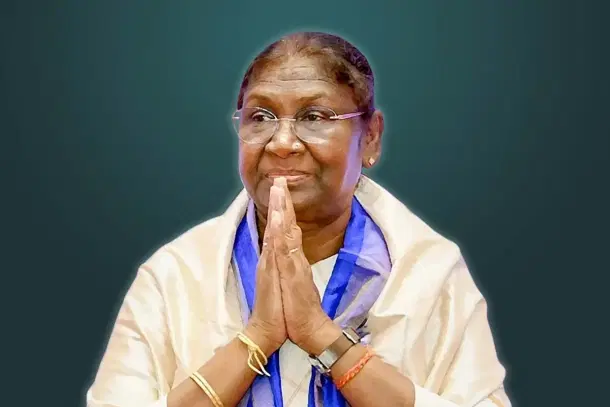
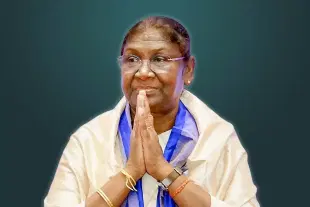
Today, 25 July 2022, is when Droupadi Murmu will be the 15th President of India. She is the first woman from a tribal community to be the head of India’s Parliament and Supreme Commander of India’s armed forces. That this has happened when the BJP is governing India is not an accident.
One should remember that the Hindutva movement in India has always stood for integration and goodwill among the various sections of society. It constantly challenges the stereotypes in this regard.
For example, during the Janata experiment in 1978-79, the RSS' choice for the Prime Minister was Babu Jagjivan Ram (1908-1986). Had he become the Prime Minister, it would have rewritten the socio-political dynamics of this country in a healthy and positive way.
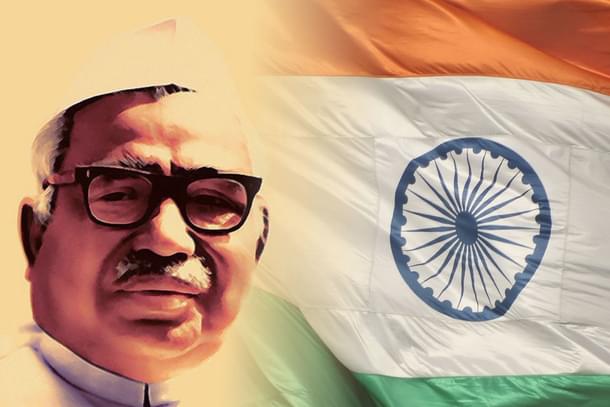
(Babu Jagjivan Ram (1908-1986) : The Prime Minister India never had)
However, Droupadi Murmu is not the first tribal candidate for Presidency that the NDA attempted. Earlier, their candidate, when they were in the opposition, was Purno Agitok Sangma (1947 –2016) who incidentally was also a Christianth
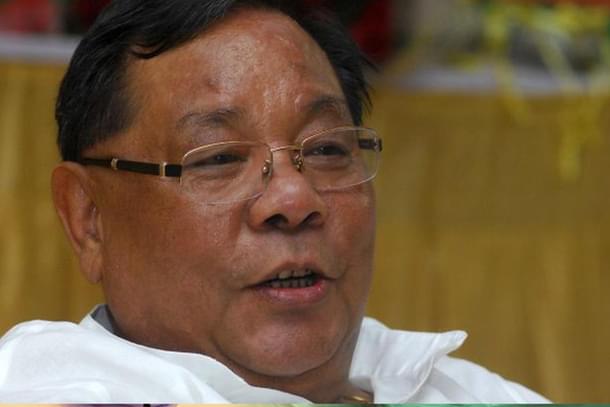
(P A Sangma, Presidential Candidate of NDA in 2012)
Undoubtedly, the election of Droupadi Murmu is integral to the Hindutva movement.
Droupadi Murmu is the personification of an emancipatory process that is civilisational. Right from the earliest transition of human civilisation to agriculture which then proceeded to form urban centres, there have been communities which had shunned such urban transitions and had chosen to be forest-dwelling communities.
Among many societies of civilisation, such forest dwelling communities were considered as primitive and barbaric. They were either destroyed or assimilated into the dominant sections.
During the colonial era, whether it be in Asia, Australia or Americas, such forest, hill or grasslands-based communities were targeted and destroyed or subjugated for the vast natural resources with which their lives were intertwined. It has only been in recent times that the worth of these communities – now termed aborigines- is getting recognition.
In India, such forest communities have long been recognised as venerable sources of natural knowledge. They have been considered sacred. Not that there were no conflicts and prejudices. There were. However, Dharma emphasised the organic bonds with the communities that were called Vanvasis – forest communities.
But, colonialism and evangelism brought in a new narrative. They said that what they categorised as Scheduled Tribes were 'Adivasis' – meaning aborigines. During colonial times, this meant they were 'primitive people'.
They had to be civilised. Getting 'Hinduised' however, meant, according to colonial sociology, getting absorbed in the last rungs of the Varna system or getting humiliated in the out-of-Varna social space.
Now, the term 'Adivasi' is used to imply that the Indian Government and non-forest-dwelling society are 'intruding oppressors' against the original inhabitants of the subcontinent. It is essentially morphing what the colonising Europeans did to aboriginal communities onto India’s forest-dwelling communities.
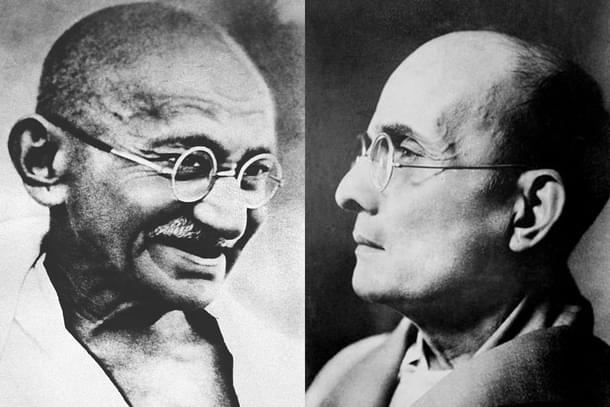
(Poles apart in politics, both Mahatma and Veer Savarkar agreed upon the common Hindu nature of tribal communities)
As against this, Gandhi to Savarkar in modern times emphasised that the tribal communities have always been a part and parcel of Hindu civilisation. They form one of the core components of Dharma.
It should be remembered that this was not a political stand against the divide-tribals policy of the British. When Gandhi stated that tribal communities were as much Hindu as any other so-called caste communities, he was stating an eternal Dharmic axiom.
Let me explain from a Tamil cultural experience.

(Shiva and Parvati as tribal couple is a pan-Indian motif)
In the famous Meenakshi temple of Madurai, there is an ornamental hall called Vetta-Mandap – the tribal hunter hall. Two magnificent sculptures of a male and female tribal couple dominate the space of this hall.
Considered none other than Shiva and Parvati, the Puranic tradition associated with that is that when a Brahmin did the most unforgivable sin that even the most depraved sinner would not imagine, Shiva and Parvati came in the form of the tribal couple and showed him the way to liberate himself from his own demonic nature.
One should note here that it could have been the other way, with the sinner being a tribal and Shiva and Parvati coming as a Brahmin couple. The Purana deliberately and boldly defies the stereotypes a superficial mind would gravitate towards. This shows that the forest-dwelling communities were considered, up until the colonial impact, as valued component of society, culture and spirituality in Hindu society.
Gandhiji always insisted that the tribal communities should be reached out to on the basis of this pan-Indian civilisational unity. There have been instances where Savarkar and Gandhians collaborated in this aspect.
In 1943, the renowned Gandhian, Thakkar Baba (1869-1951), who had been working for tribal welfare, came together with Veer Savarkar to create schools for tribal children.
Later, influenced by Thakkar Baba, ‘Vanyogi’ Ramakant Keshav Deshpande (1913-1995) started the Vanvasi Kalyan Ashram (VKA) in 1952.

(Thakkar Baba and Vanyogi Deshpande: vision and mission of Vanvasi Kalyan Ashram)
Unlike the Western ‘indigenous people’s rights’ movements which often play in the hands of neo-colonial forces, the VKA has constantly been striving for bringing together the forest communities and non-forest communities without compromising on social justice.

(Limba Ram - Archery National Sensation)
For example, Eklavya Khelkood of VKA has been identifying, nurturing and giving platform to the sporting talents. The legendary archer Limba Ram and long-distance runner Kavita Tungar have their roots in VKA. Damodar Ganesh Bapat (1935-2019), who started his social service life at VKA went on to dedicate his life for the eradication of leprosy in tribal areas.
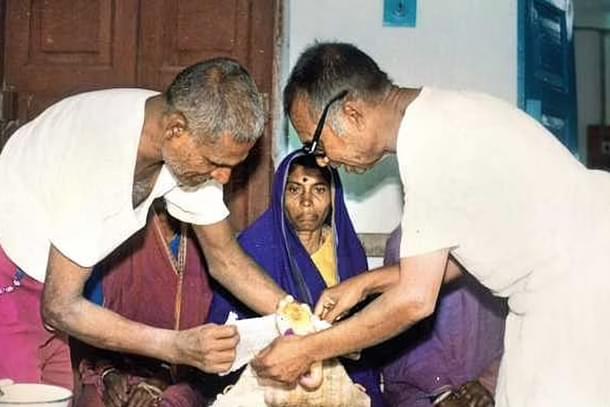
(Damodar Ganesh Bapat - a life dedicated to eradicating leprosy)
It was the VKA which worked tirelessly for the resettlement of Reangs, refugees who lived for more than two decades in sub-human refugee camps.
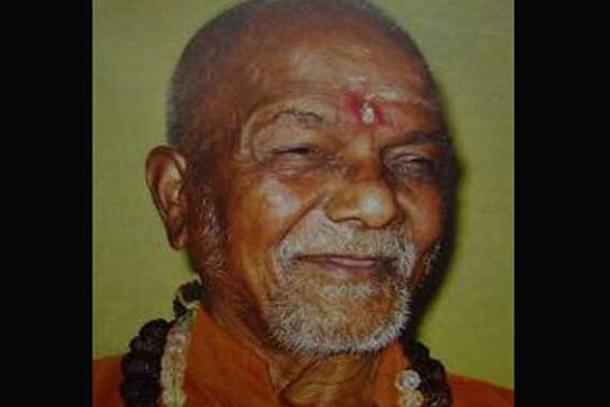
(Van-Balidani Swami Lakshmanananda Saraswati)
Last but not least, at the time when a dynamic woman leader belonging to Scheduled Tribe of Odisha reaches Raisina Hill, let us not forget the supreme sacrifice of Swami Lakshmananda Saraswati, who was assassinated by anti-national and anti-tribal forces, only because he was working for the welfare and harmonious development of the tribal children of Kandhamal.
Aravindan is a contributing editor at Swarajya.





